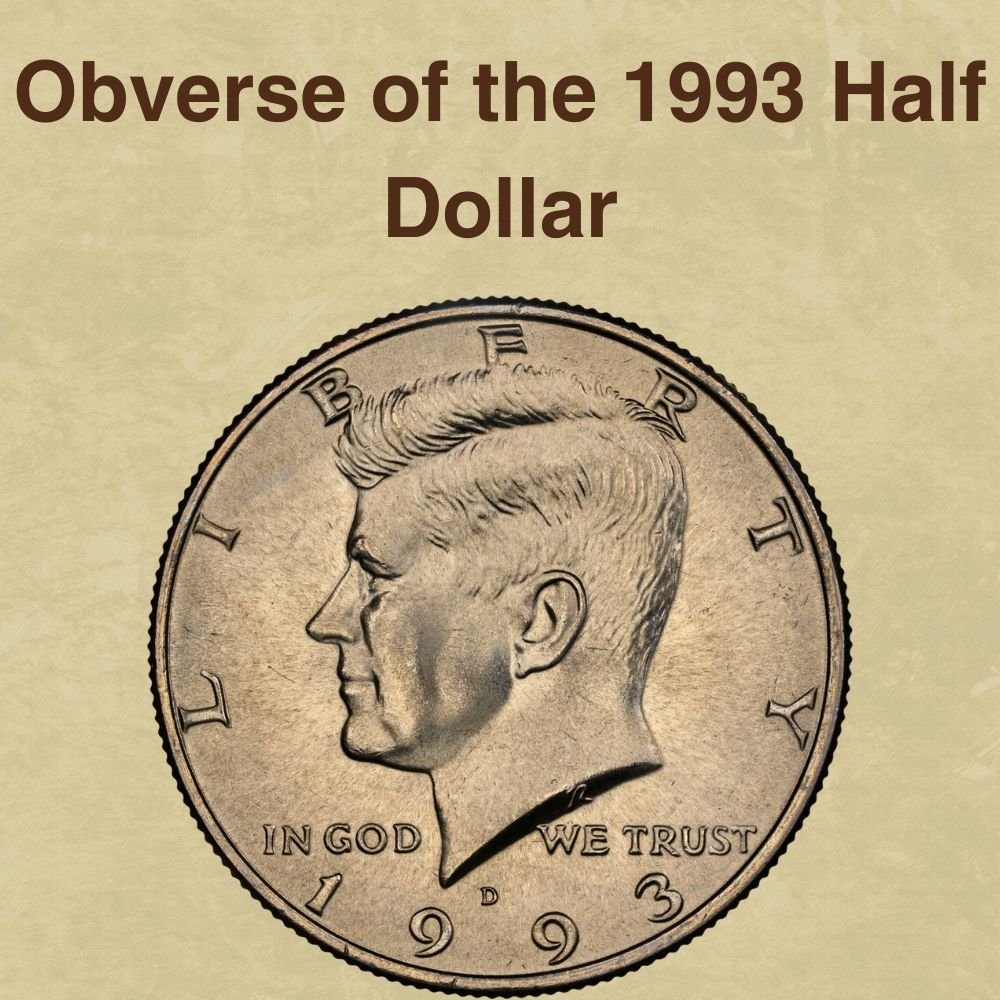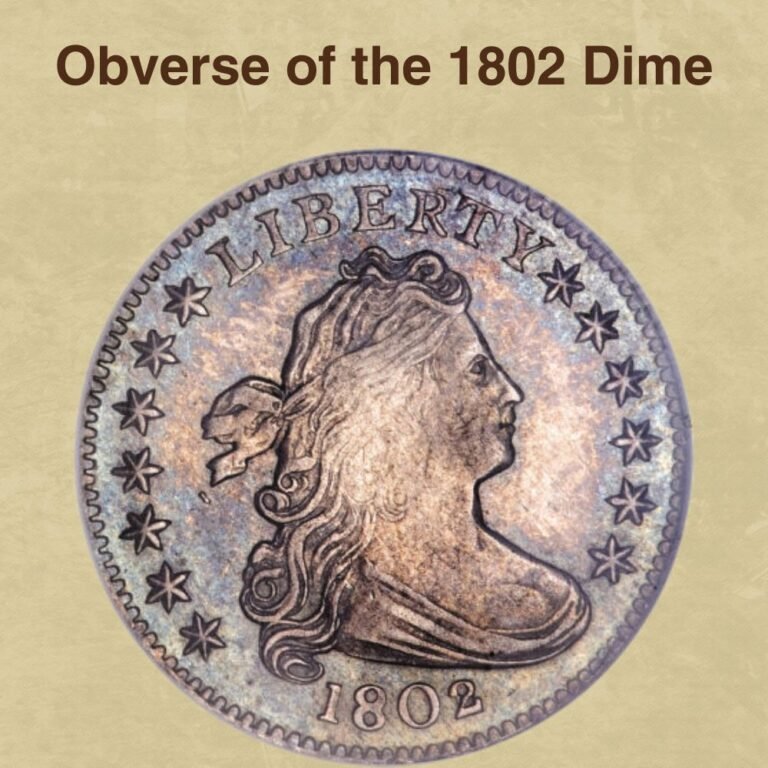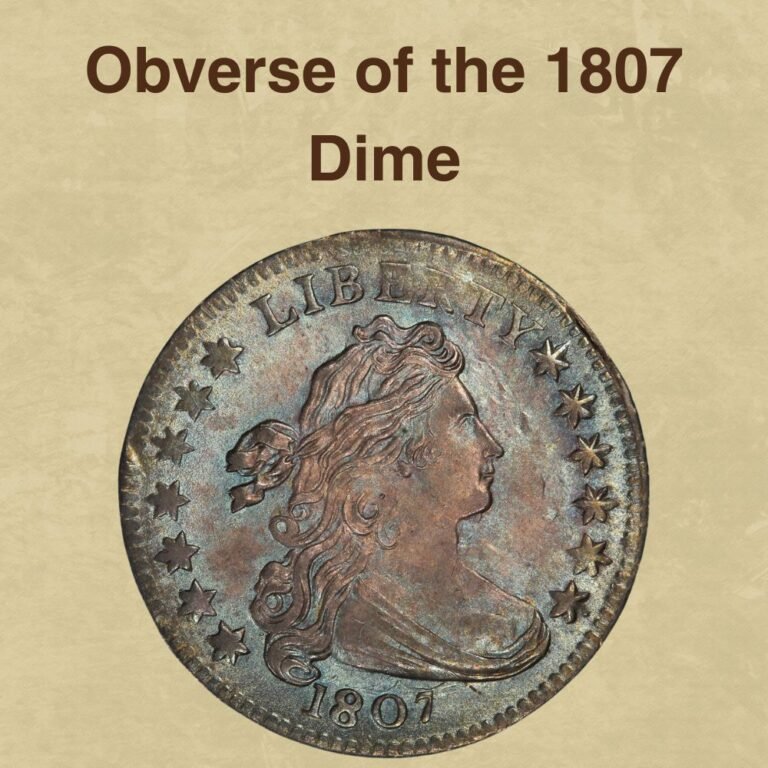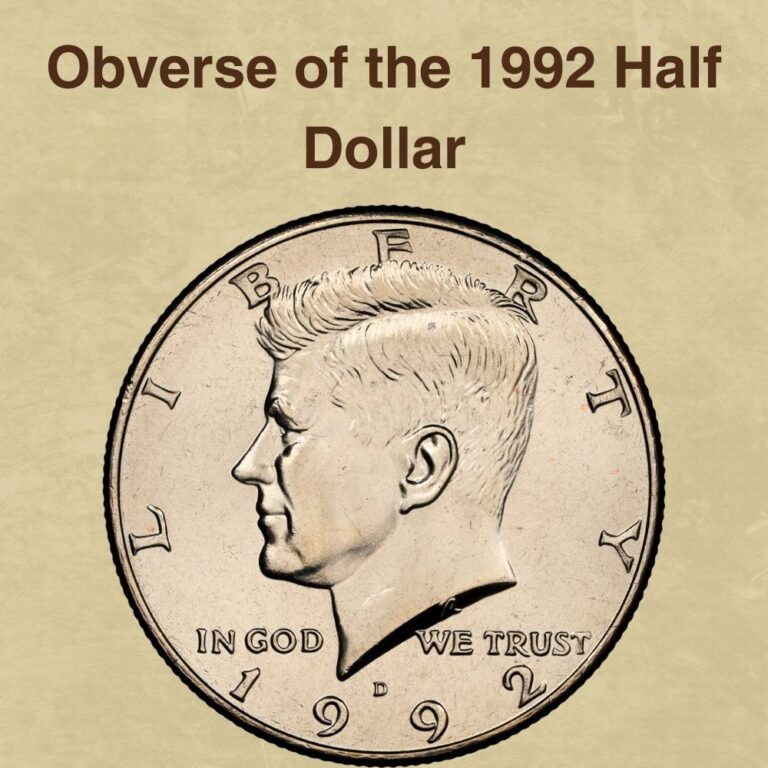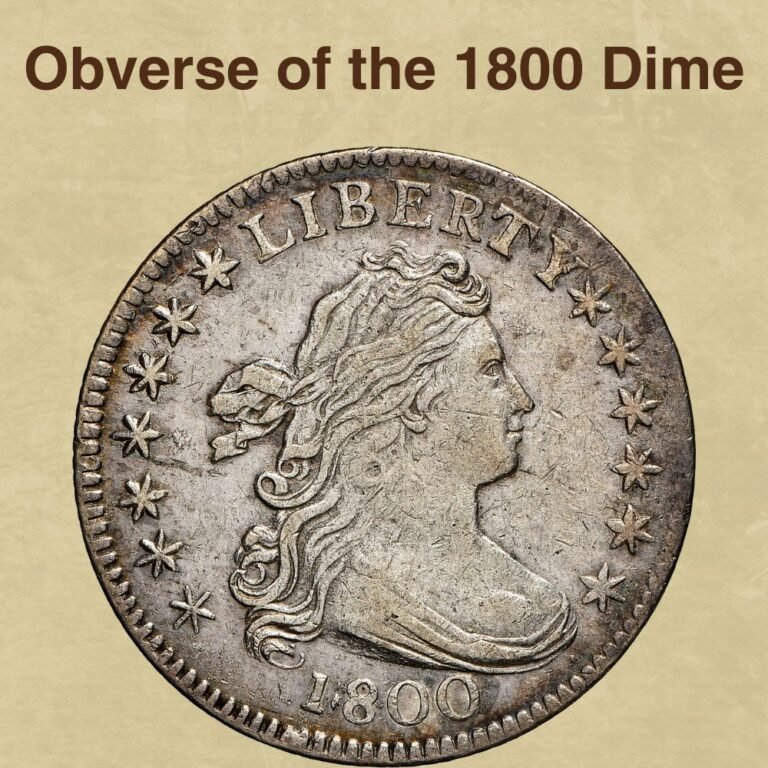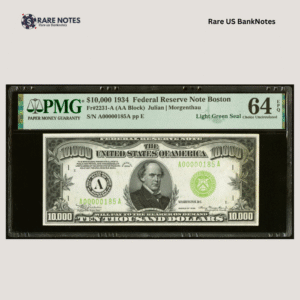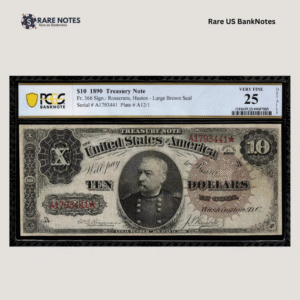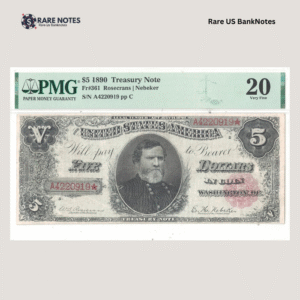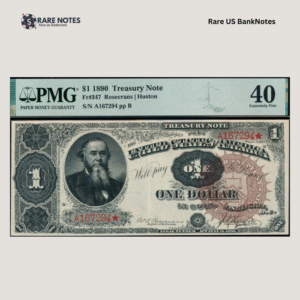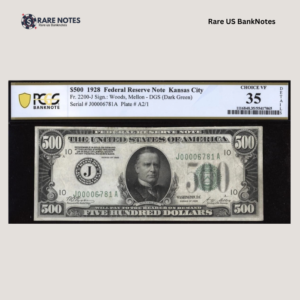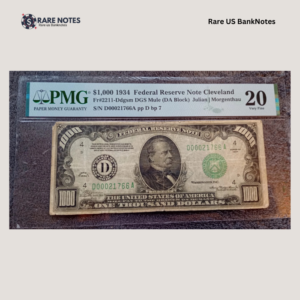The 1993 half dollar might not be a key date, but it’s an important piece of the puzzle if you are looking to build a complete collection of Kennedy half dollars. Mint State examples and Gems are enough to satisfy collectors’ demand and can command nice premiums.
Whether buying or selling, our 1993 half-dollar value guide will reveal the coin’s real market value so you can make a smart choice. We’ll offer tips on grading your coin like a pro and unveil high-value minting errors worth collecting.
So, let’s jump in and find out: is a 1993 half dollar worth anything?
1993 Half Dollar Value Chart |
||||
| Mint Mark | Good | Fine | Extremely Fine | Uncirculated |
| 1993-P Half Dollar Value | $0.55 | $0.55 | $0.55 | $70 |
| 1993-D Half Dollar Value | $0.55 | $0.55 | $0.55 | $90 |
| 1993-S Clad Proof Half Dollar Value | – | – | – | $35 |
| 1993-S Silver Proof Half Dollar Value | – | – | – | $37.50 |
History of the 1993 Half Dollar
The 1993 half dollar is part of the long-running Kennedy half dollar series produced by the United States Mint since 1964 to commemorate the slain president, John F. Kennedy. Soon after Kennedy’s assassination on November 22, 1963, Mint Chief Engraver Eva Adams began discussing with the Chief Engraver, Gilroy Roberts, about the possibility of designing a new coin to commemorate President Kennedy.
Kennedy would be depicted on either the silver dollar, half, or quarter dollar, but after consultations with Kennedy’s widow, Jaqueline Kennedy, the Mint decided to replace Benjamin Franklin’s image on the half dollar with that of President Kennedy.
As production had to start immediately, Roberts and his assistant Frank Gasparro would use the designs they had each created for the Presidential Series and apply them to the new Kennedy half dollar. Roberts designed the obverse of the Presidential Seal while Gasparro designed the reverse. The bill authorizing the new Kennedy half dollar was passed in Congress, and President Johnson signed it into law on December 30, 1963, paving the way for production in January 1964.
Initially, the Mint struck only proof coins before going on to produce circulation strike half dollars later in January, first at the Denver Mint and then at Philadelphia. The new coin was released into circulation in March 1964 to massive public demand. These Kennedy halves, made of 90% silver, were quickly snatched out of circulation and hoarded. The Mint struck millions of half-dollar coins to meet the demand, bringing the total to 141 million coins in the first year of production.
The hoarding continued in the years that followed. An increase in production was ineffective at improving circulation—what happened instead is that the intensive minting depleted the Treasury’s silver stock. In response, the Mint reduced the silver content in half dollars from 90% to 40%. Thereafter, the Coinage Act of 1965 authorized the Mint to produce clad coins containing 80% silver and 20% copper with an inner core comprising 21% silver and 79% copper. But, even the reduction of the silver content did not boost circulation despite the Mint’s attempt to increase production.
In May 1969, the Treasury proposed that the remaining silver content in half dollars be eliminated and replaced by a copper-nickel metal composition. It wasn’t until 1970 that President Richard Nixon signed the bill authorizing the production of a clad Kennedy half dollar made from Copper and Nickel. Although the Mint had anticipated that the new clad coin would finally circulate widely, there was only a modest increase in the circulation of Kennedy halves.
The first silver proof sets containing 90% silver were first minted in 1992. The 1993 issue was the second year in which the Mint issued both clad and silver proof half dollars for collectors. Although not considered a key date, the 1993 half dollar can be a valuable addition if you are looking to build a complete half-dollar collection.
Features of the 1993 Half Dollar
Next, we’ll learn about the standout features that can help you authenticate and grade your 1993 half dollar more accurately. Knowing these key characteristics will also come in handy when identifying Kennedy halves worth good money.
Here are the features to look out for:
Obverse of the 1993 Half Dollar
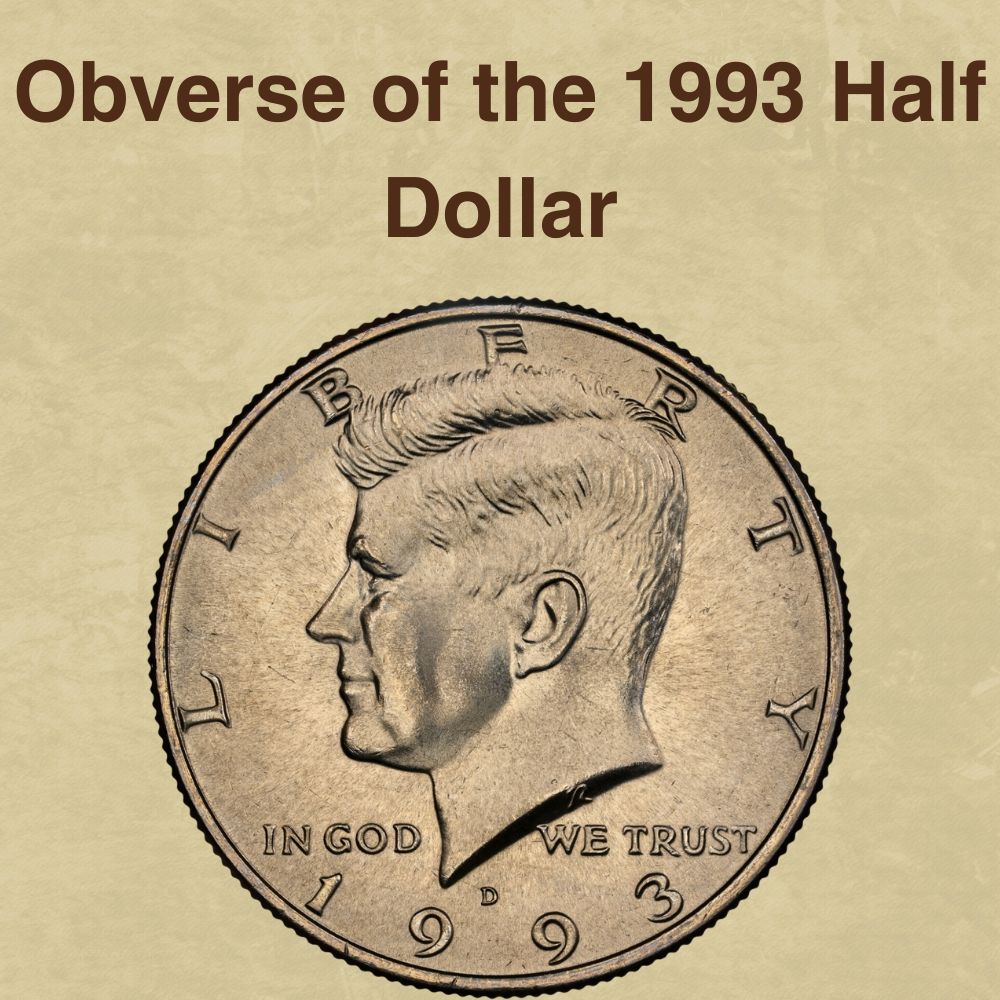
The front side displays Kennedy’s left-facing profile image, in which he poses with a slight smile. The word LIBERTY is inscribed in an arc at the top along the rim, while the date, 1993, is shown on the opposite side at the bottom.
The national motto, IN GOD WE TRUST, is inscribed horizontally at the truncation of Kennedy’s profile. Just below the truncation are the initials, G.R., which stand for Gilbert Roberts, who designed the coin’s obverse.
The Mint Mark P (Philadelphia), D (Denver), or S (San Francisco) is usually positioned between the two 9s in the date.
Reverse of the 1993 Half Dollar

On the back is an image of the heraldic eagle modelled from the presidential seal. A shield on the eagle’s breast represents self-defense and strength in the unity between the states under the authority of the federal government.
The eagle clutches in its beak a flag with the Latin inscription E PLURIBUS UNUM, which means “Out Of One, Many.” Rays of sunlight, crowned with billows of cloud and speckled with thirteen stars, emerge from behind the eagle. The stars represent the thirteen states that first joined the Union.
In its left talon, the eagle holds arrows, which are symbolic of victory and readiness to defend the nation against aggression. The olive branch in the right talon represents peace. The initials ‘FG’ are tucked underneath the eagle’s left talon and stand for Frank Gasparo, who created the reverse design.
The eagle’s image is surrounded by stars, which represent the States. UNITED STATES OF AMERICA is inscribed in an arc at the top while the denomination, HALF DOLLAR, is etched at the bottom.
Other Features of the 1993 Half Dollar
Additional noteworthy features of the 1993 half dollar include:
- Diameter: 30.61 millimeters
- Weight: 11.30 grams
- Edge: 150 Reeds
- Metal Composition: 75% Copper, 25% Nickel over a Copper core
Also read: 13 Most Valuable Kennedy Half Dollar Worth Money
1993 Half Dollar Value Guides
So, how much is the 1993 half dollar? The real market value depends on factors such as the coin’s condition, mintmark, mintage, and rarity. The presence of unique and recognizable minting errors can also significantly add to the coin’s value.
There are four types of the 1993 half dollar:
- 1993-P Half Dollar
- 1993-D Half Dollar
- 1993 Clad Proof Half Dollar
- 1993 Silver Proof Half Dollar
Let’s find out how much each is worth:
1993-P Half Dollar Value

In 1993, the Philadelphia Mint struck 15,510,000 Kennedy half dollars. These coins were generally well-struck, and with a relatively high mintage, there are enough survivors to meet collectors’ demands.
Here’s a breakdown of the values of circulated and uncirculated 1993-P half dollars:
- Circulated Examples: These are plentiful in all grades and accessible to any collector. Given that 1993 half dollars are quite modern coins, collecting them is relatively easy, making them a nice addition to your collection. Examples graded Poor/Average to About Uncirculated (AU55) are worth $0.55, which is more or less the coin’s face value. Prices rise slightly in AU58 to sell for $0.65.
- Mint State Examples: Uncirculated examples are equally abundant and affordable in all grades. Gems with frosted devices and satiny finishes have been certified as well. In MS60, examples can sell for as much as $0.75 and up to $1.50 in MS62. Examples graded MS63 are worth about $3 and as much as $15 in MS65. Rare MS67 gems are worth up to $70.
- Auction Record: One of the most valuable examples of a 1933-P half dollar graded MS67 was auctioned in a 2022 eBay sale for an impressive $425.
1993-D Half Dollar Value
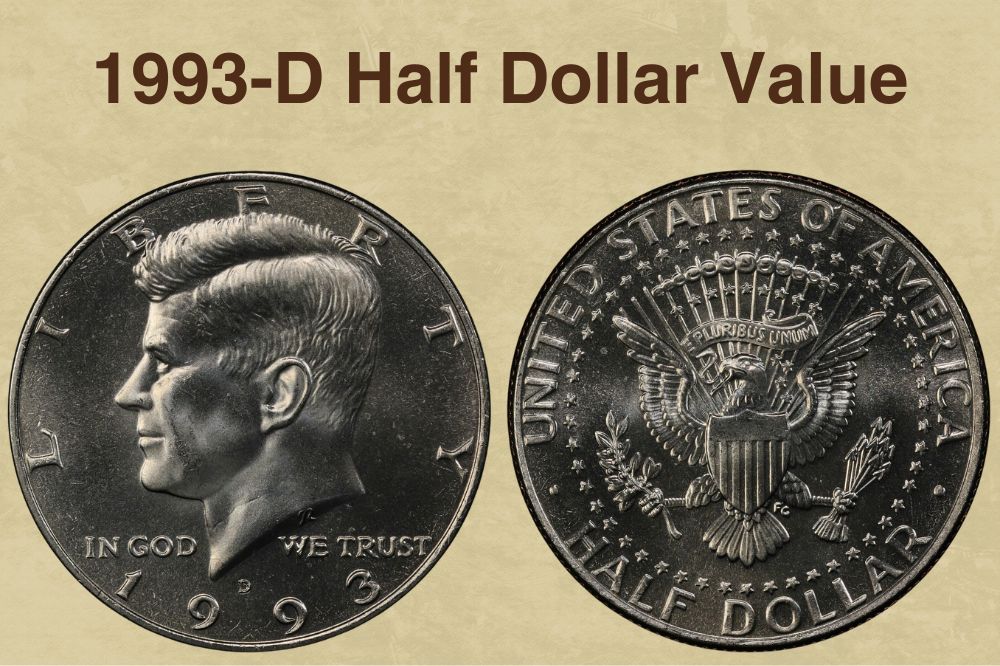
The Denver Mint struck about 15,000,006 half dollars in 1993, a mintage similar to that of the Philadelphia Mint. These coins are common in all grades and are an easy addition to any collection.
Here’s what to expect when collecting 1993-D half dollars:
- Circulated Examples: Examples of worn 1993-D halves are plentiful and affordable in all grades. Prices start at $0.55 for survivors graded Poor/Average to About Uncirculated (AU55). In AU58, examples are worth slightly more, selling for up to $0.65.
- Mint State Examples: Uncirculated examples are equally plentiful to satisfy collectors’ demand. In MS60, pieces can sell for as much as $0.70 while prices increase to about $1.50 in MS62 and as much as $7.50 in MS64. Gems in MS65 and higher are relatively scarce, but their prices remain affordable for most collectors. For example, in MS65, examples can fetch as much as $15 and up to $90 in MS67.
- Auction Record: In a 2014 sale, Heritage Auctions sold an MS68 for a remarkable $2,585, making this one of the most valuable examples of a 1993-D half dollar.
1993-S Clad Proof Half Dollar

The San Francisco Mint struck 2,633,439 proofs for collectors. These special strike coins contain the same metal composition as their circulation strike—75% Copper and 25% Nickel over a Copper core. These proofs were well-struck with mirror-like surfaces and frosted devices.
Here’s how much they are worth:
- Regular Proofs: These are plentiful, making up the majority of the 1993 clad proof half dollars. Prices range from $1.15 in PF60 to as much as $30 in PF70.
- Cameos: These are relatively common as well, and their prices are friendly for most collectors. Prices in PF60 start at $1.50 to $35 in PF70.
- Deep Cameos: These gems are a bit harder to find, although a few examples have been certified. At the lower end of the scale, starting at PF60, examples can sell for about $1.75, while brilliant gem specimens in PF70 can fetch up to $50.
1993-S Silver Proof Half Dollar

In addition to the clad proof set, the Mint at San Francisco also struck about 761,353 silver proofs. Their quality is in the PF69-PF70 Deep Cameo range and will command at least $75 at the highest end of the grade.
Also read: 11 Most Valuable Half Dollars In Circulation
1993 Half Dollar Grading
Grading the 1993 half dollar entails focusing on high points that wear the fastest. The extent of wear will help you determine if the coin is a low or high-grade example. On the obverse, check for wear at the top of Kennedy’s hair and next to his ear. Examine his cheek and jawline as well for flatness or smoothness. On the reverse, pay attention to the eagle’s head, shield, wing, and tailfeathers, talons, olive branch, and arrows. Also, check the inscriptions on both sides to determine the extent of wear.
Flatness, loss of outline around the design elements, dull surfaces, and faint details point to a lower grade. Higher grade examples, on the other hand, will display crisp details, solid outlines, and full mint luster.
Check out this video for more great tips on grading Kennedy Half Dollars.
Rare 1993 Half Dollar Errors list
Kennedy half dollars, including the 1993 issue, were well-struck and displayed very few minting errors. That said, errors are inevitable, and some in the 1993 half-dollar series are worth collecting.
1. 1993 Half Dollar Doubled Die Error

A doubled die error can add $10-$50 or more to your coin, depending on the intensity of the doubling. This error occurs when the die strikes the planchet multiple times at slightly different angles, resulting in visible doubling on the design elements and inscriptions. The more visible the doubling, the more valuable the coin becomes.
2. 1993 Half Dollar Re-punched Mintmark Error
Re-punched mintmark errors are also seen on some 1993 Kennedy halves. This error results from the mintmark being punched into the working die severally in slightly different positions, resulting in a ghost outline around the mintmark. So, the mintmark P, D, or S will appear somewhat doubled, and this can be a fascinating sight for collectors. A re-punched mintmark can raise your coin’s value by $10-$50 or more.
Where to Sell Your 1993 Half Dollar?
Now that you know the value of your coins, do you know where to sell those coins online easily? Don’t worry, I’ve compiled a list of these sites, including their introduction, pros, and cons.
Check out now: Best Places To Sell Coins Online (Pros & Cons)
FAQs
Are 1993 half dollars silver?
No. Circulation strike 1993 half dollars are not silver. Rather, they are clad coins made of 75% Copper and 25% Nickel, with the Nickel content giving the coin its silverish appearance.
How do I tell if my 1993 Kennedy Half Dollar is valuable?
The most valuable 1993 Kennedy half dollars are those in Mint State condition. These coins have a brilliant surface, frosted design elements, and no wear or surface damage. Half dollars with known and recognized minting errors can also be valuable.
What is the 1993 commemorative half dollar?
The 1993 commemorative half dollar is not part of the Kennedy half dollar series. Rather, it was the first commemorative half dollar to be struck at the Mint in West Point in honor of the Bill of Rights and its pioneer, James Madison, who is featured on the coin’s obverse.
The post 1993 Half Dollar Coin Value (Errors List, “P”, “S” & “D” Mint Mark Worth) appeared first on CoinValueChecker.com.


